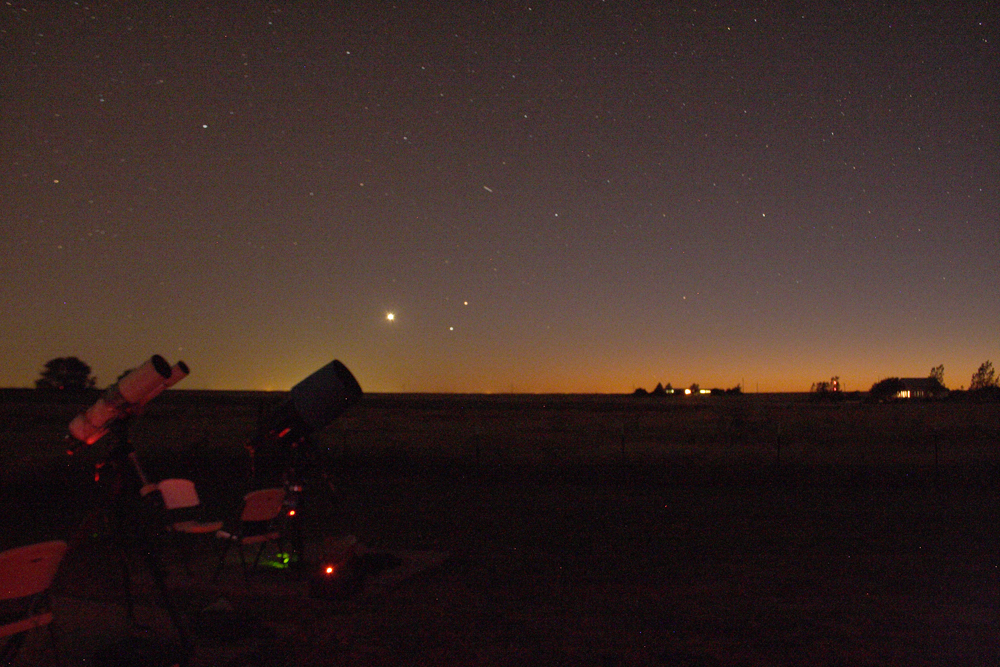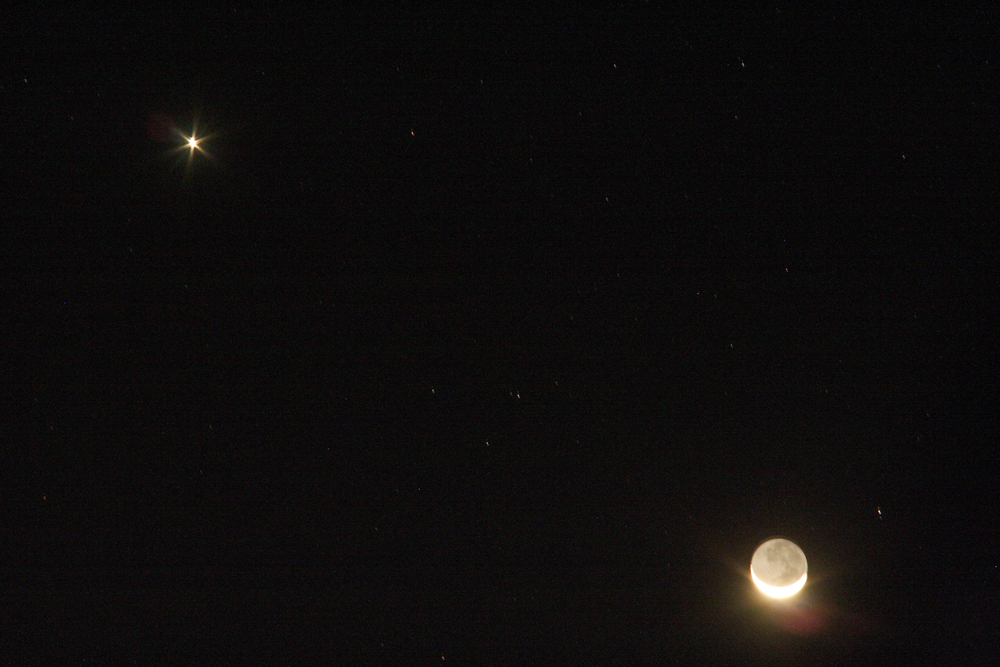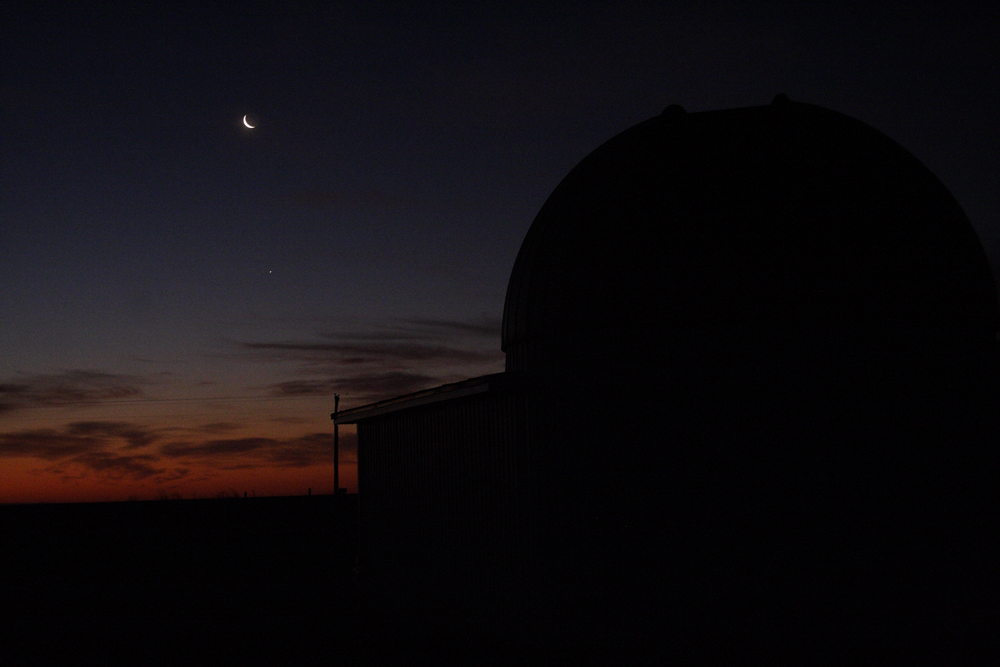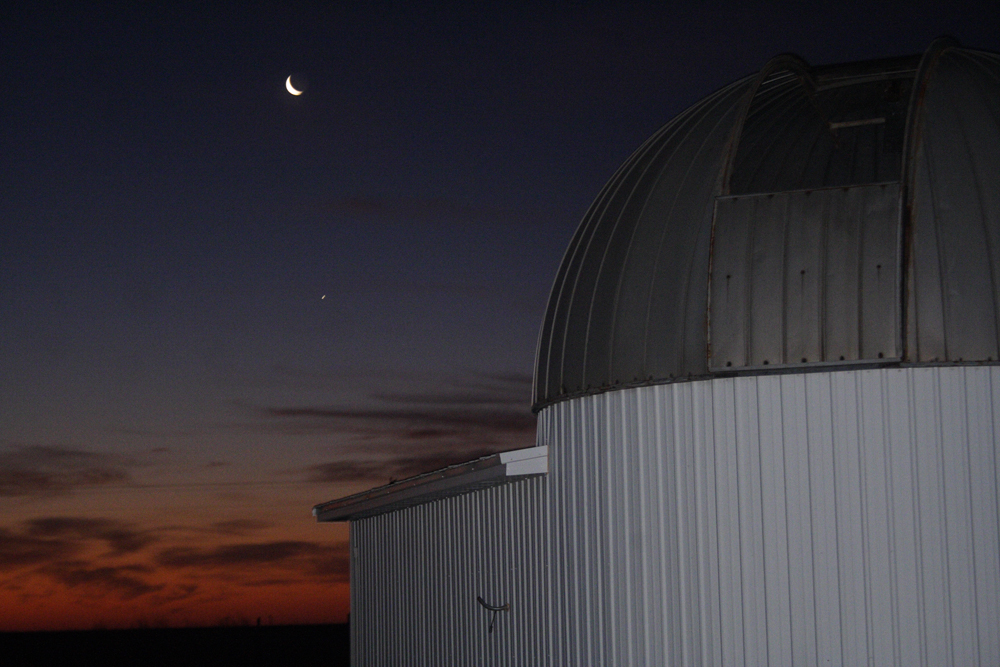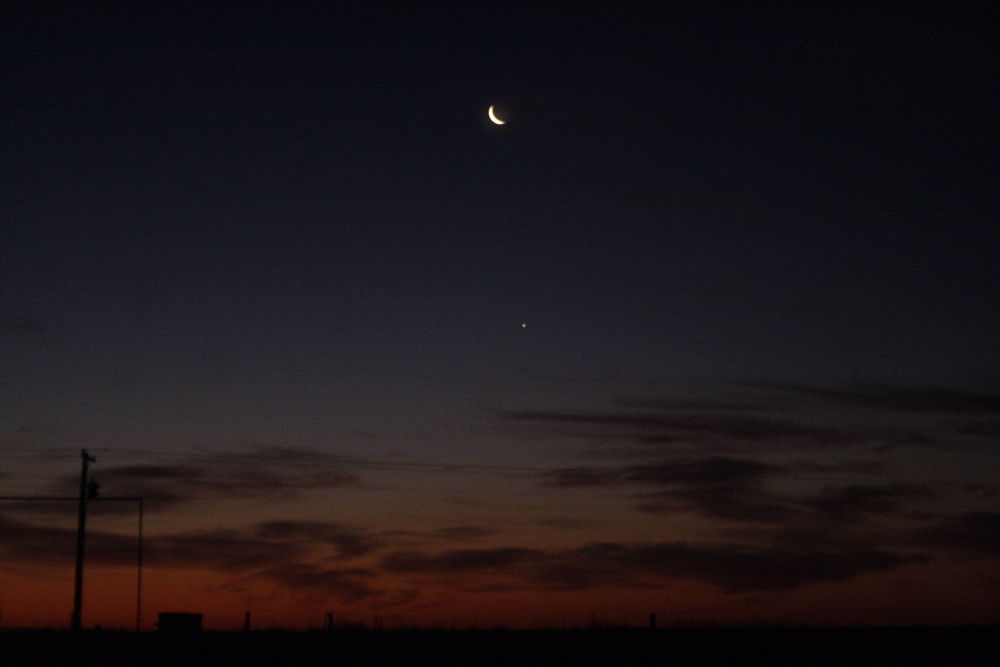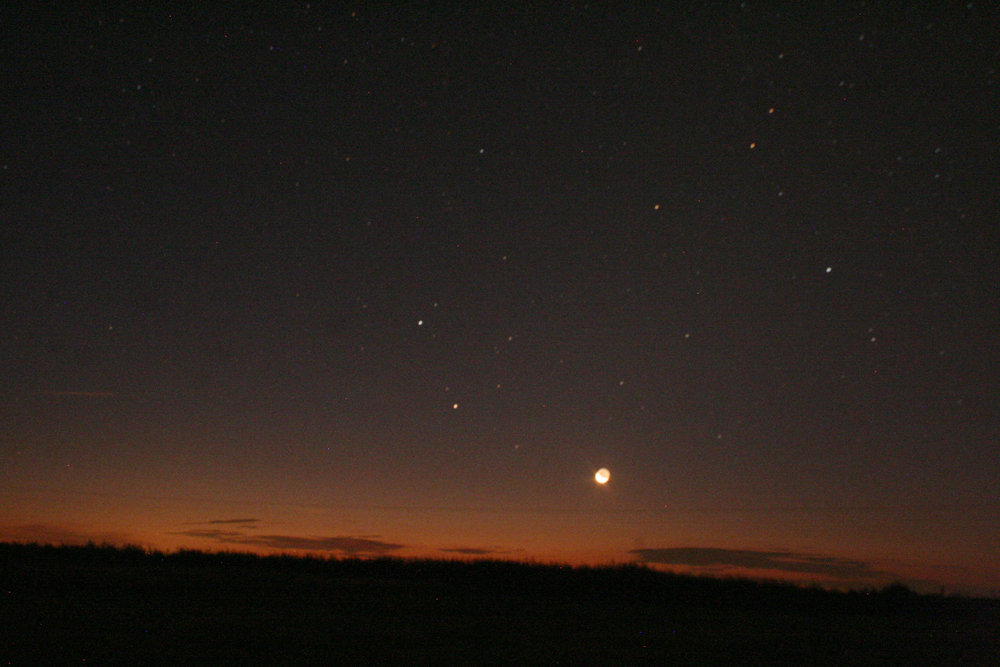
15 seconds exposure, Kodak Ektachrome 400 slide film.
50mm f/2 nikkormat lens.
Although of no particular scientific value, planetary conjunctions are always fun to see and can be a very useful means of reaching the general public with news about astronomy. Almost every year has a few interesting conjunctions so here are just a few of those I have photographed.

A pre-dawn view of all the naked-eye planets plus the waning cresent Moon. I just happened to notice this grouping while driving home after observing meteors all night, so I pulled over to the side of the road and photographed the sight by balancing the camera on the car roof. Unfortunately, I have no records of when the photograph was taken. It is most likely in mid-December and I had been observing the geminids. To the left of the Moon is Venus, while Mars is just rising in the twilight. To the best of my memory, then comes Saturn, Mercury, Spica and Jupiter.
During October, 1994, Venus and Jupiter were close together in the early evening sky. During the early part of the month they were joined by Mercury and on October 8, the Moon added its presence to the grouping.
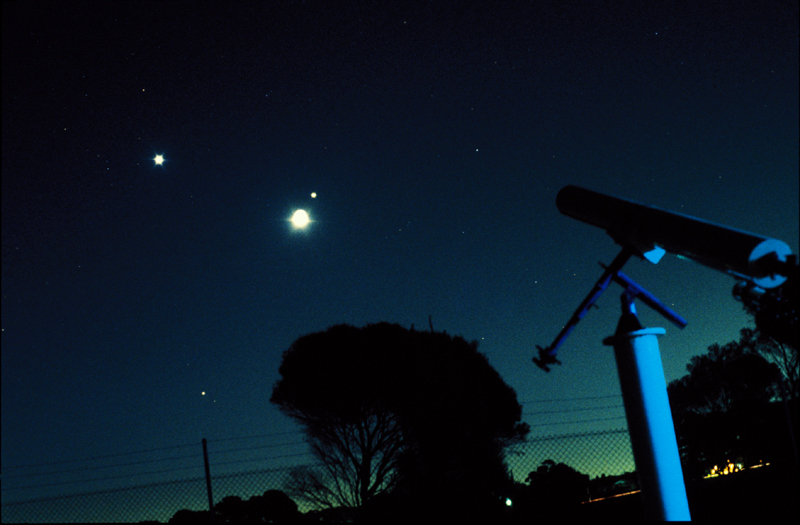
The telescope in the photograph is the 6" f/15 refractor belonging to the Murdoch University. The blue glow illuminating it is comming from a mosquito trap mounted on the observatory wall. The Moon is the brightest object, with Jupiter just above it. Venus is the bright object to the left and Mercury is at the lower left, just above the fence.
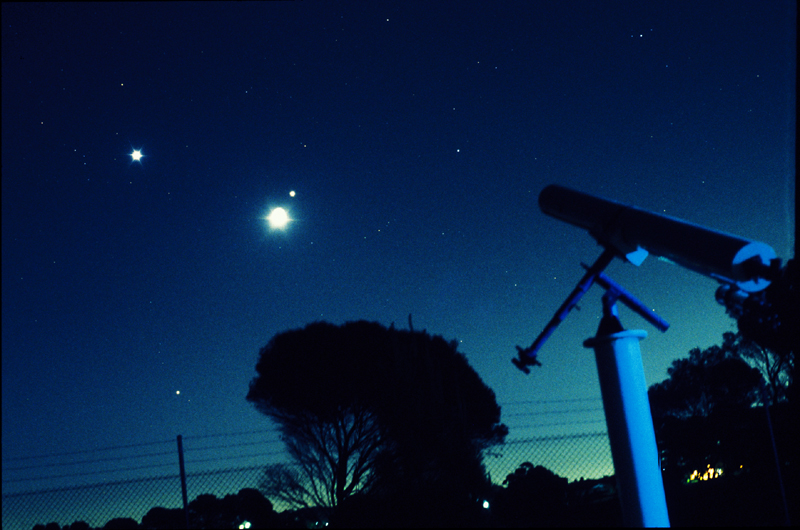
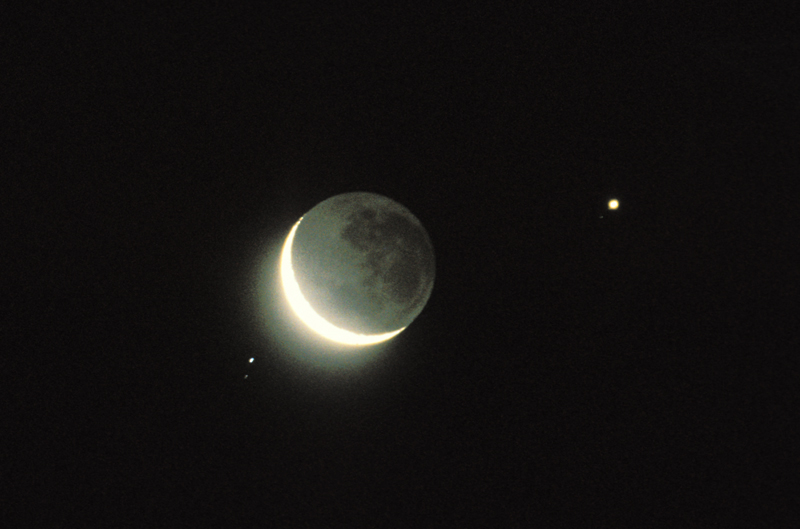
Here the Moon is between Jupiter and Zuben-el-genubi. As the Moon set, I watched it through the telescope and it was quite a startling sight as the bushes came into view. The Moon remained stationary as the telescope was following it. However the bushes made sudden jumps towards it in the eyepiece. This optical illusion was caused by the eye not following the very slow motion of the horizon moving towards the Moon.
At one stage I had problems with the camera wind-on and it did not advance the film once. The result was a grazing occultation of the Moon by the Moon!!!
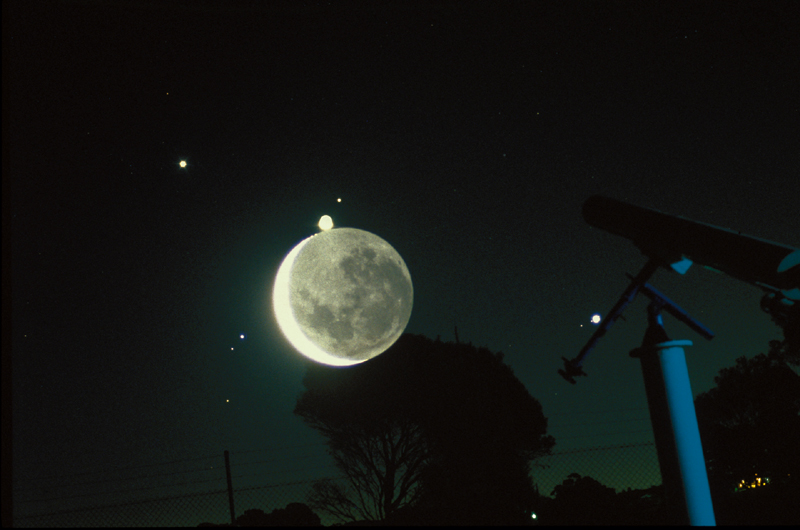
During November 14 - 19, 1995, there was a rare conjunction of the planets Venus Jupiter and Mars. Study committments kept me from photographing the conjunction as often as I wished, however I managed to obtain a few images, mainly when the planets were at their closest. In this photograph, the planets as seen over the 12" telescope dome at Murdoch Observatory, which is illuminated by the quarter Moon. It is interesting that Venus was also bright enough to cause a reflection from the dome.
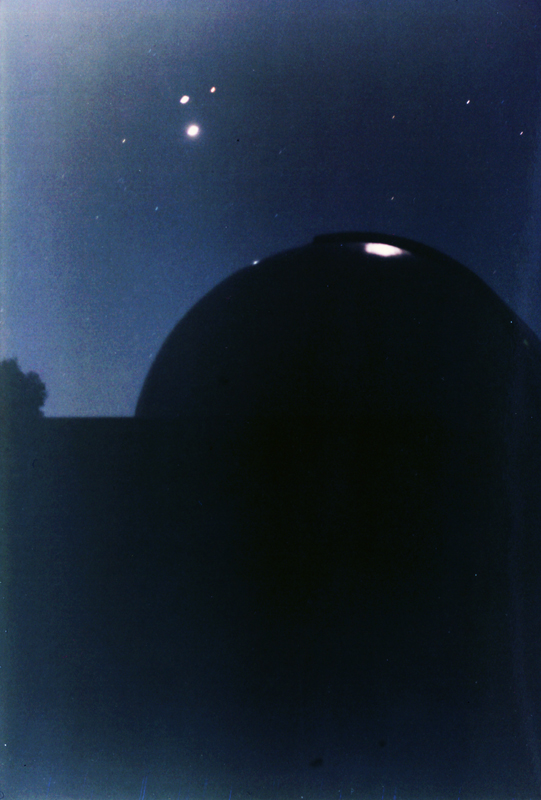
By November 22, Mars and Venus were very close, but they had pulled away from Jupiter, which was rapidly falling into the twilight.
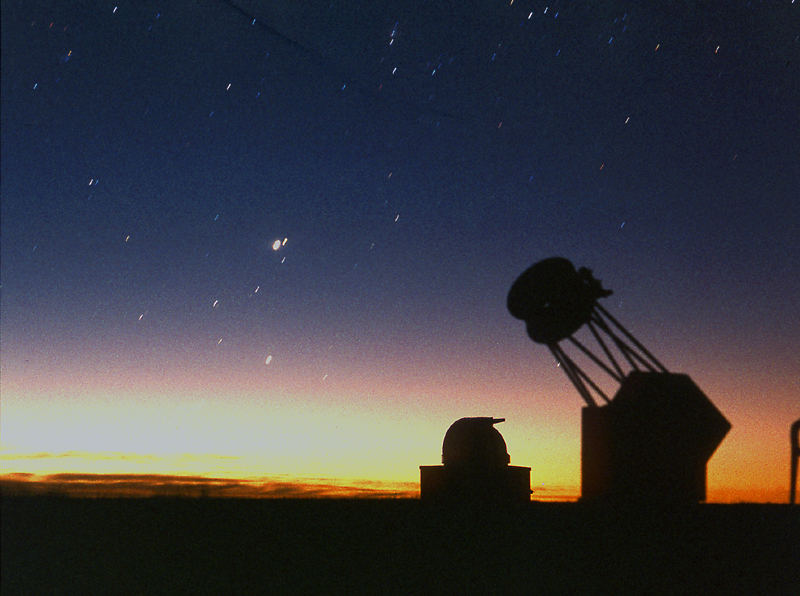
In 1998 Mars and Jupiter had a very close conjunction in the evening sky. January 21 was when they were at their closest. At that time they were less than 15 arc minutes apart and easily visible in the same telescope field. It made for quite a sight.

During May of 2011 there was a nice conjunction of the planets Venus, Jupiter, Mercury and Mars in the pre-dawn skies. Jupiter and Venus were at their closest on May 11, while Venus passed Mars on the 23rd. Finally they were joined by the Moon on the 30th.
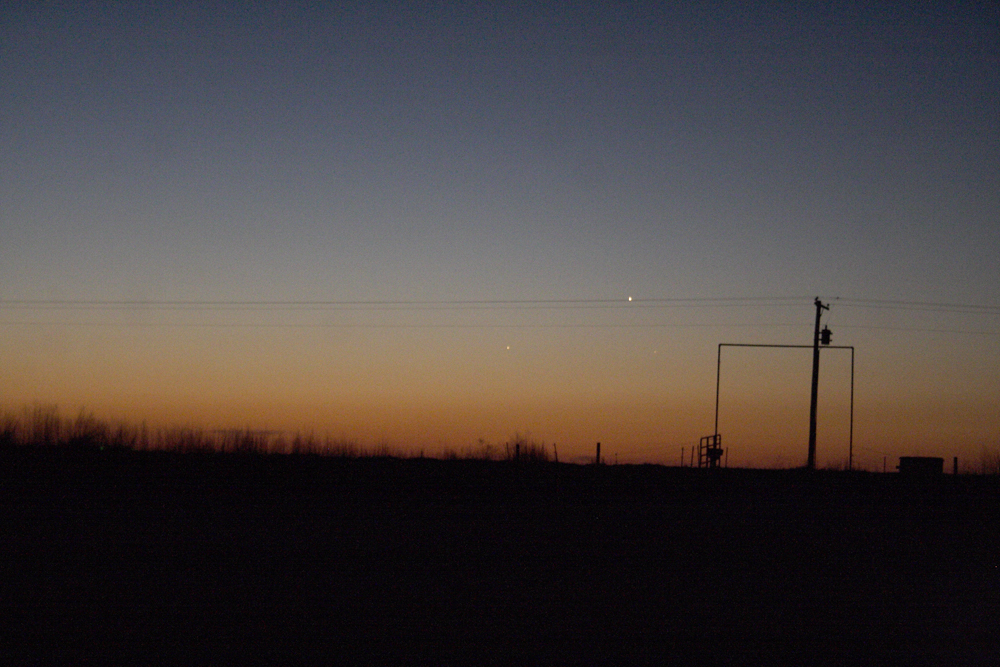
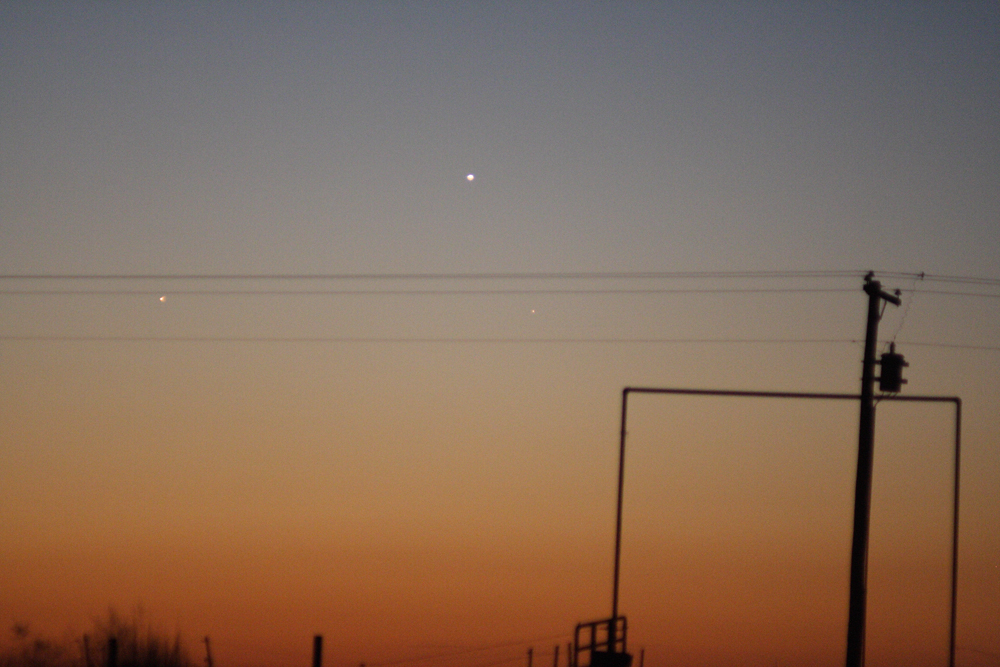
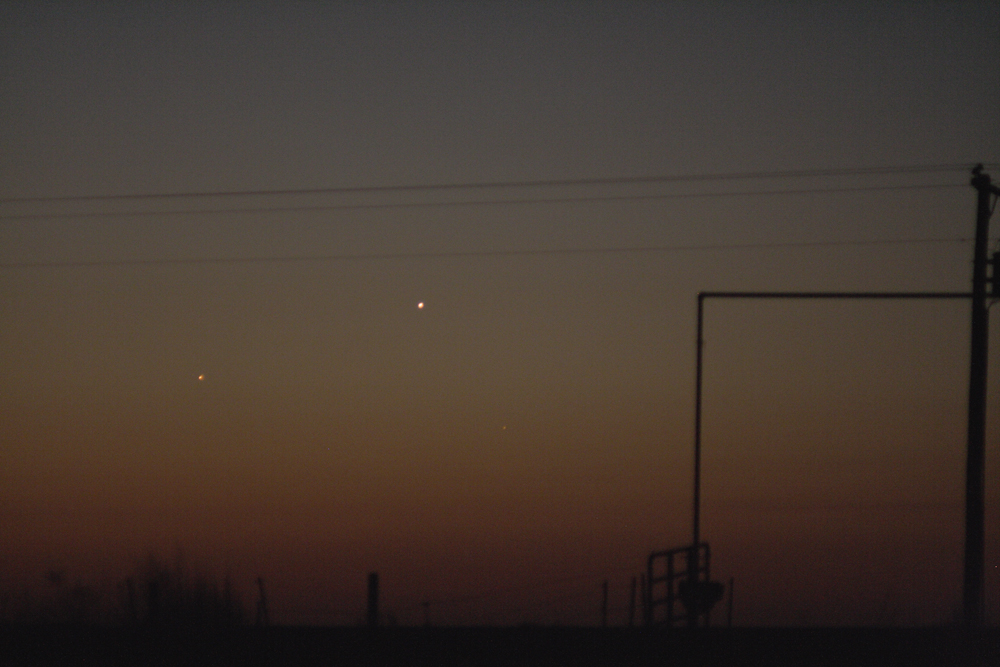
The motion of Venus in just 24 hours is quite noticeable by comparing the previous 2 images.
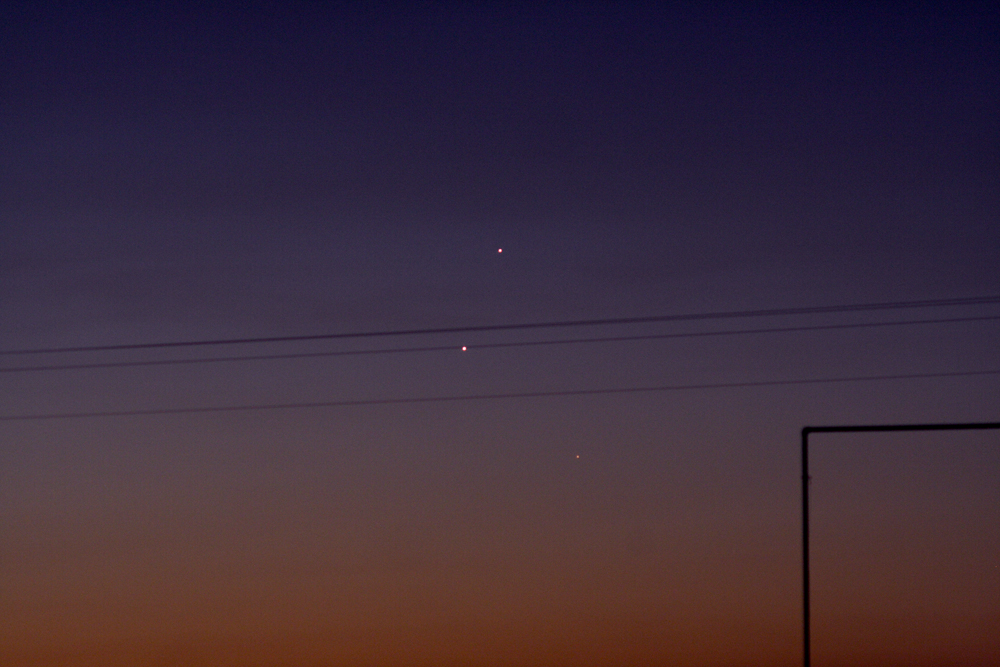
On this morning Mars could just be seen rising in the twilight. Unfortunately the glow was too bright for it to appear in this image.
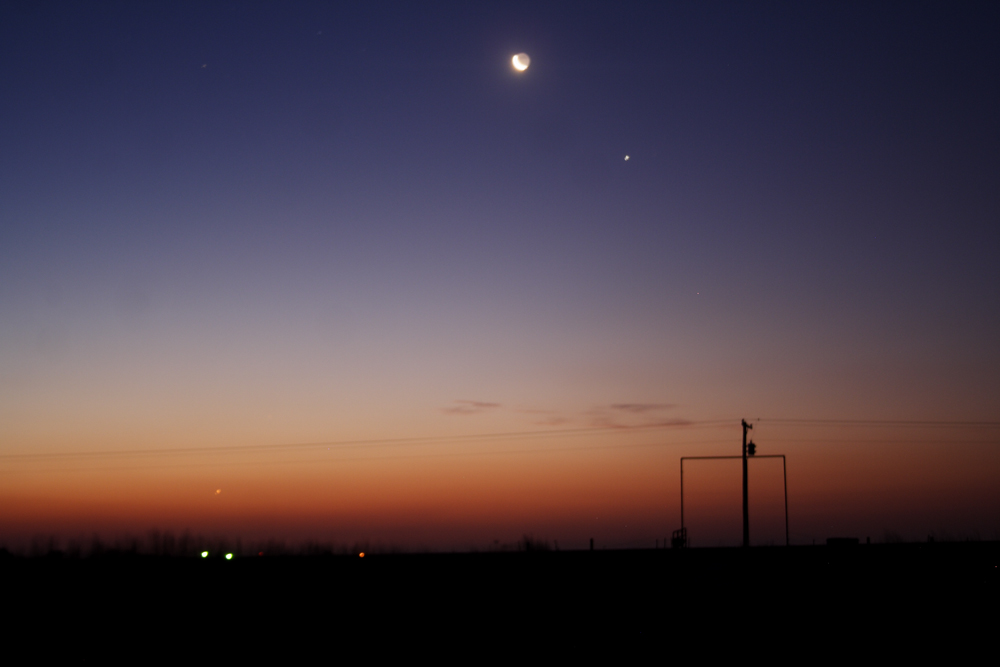
Mars is also faintly visible in the above image, just above the power lines above and slightly right of Venus.
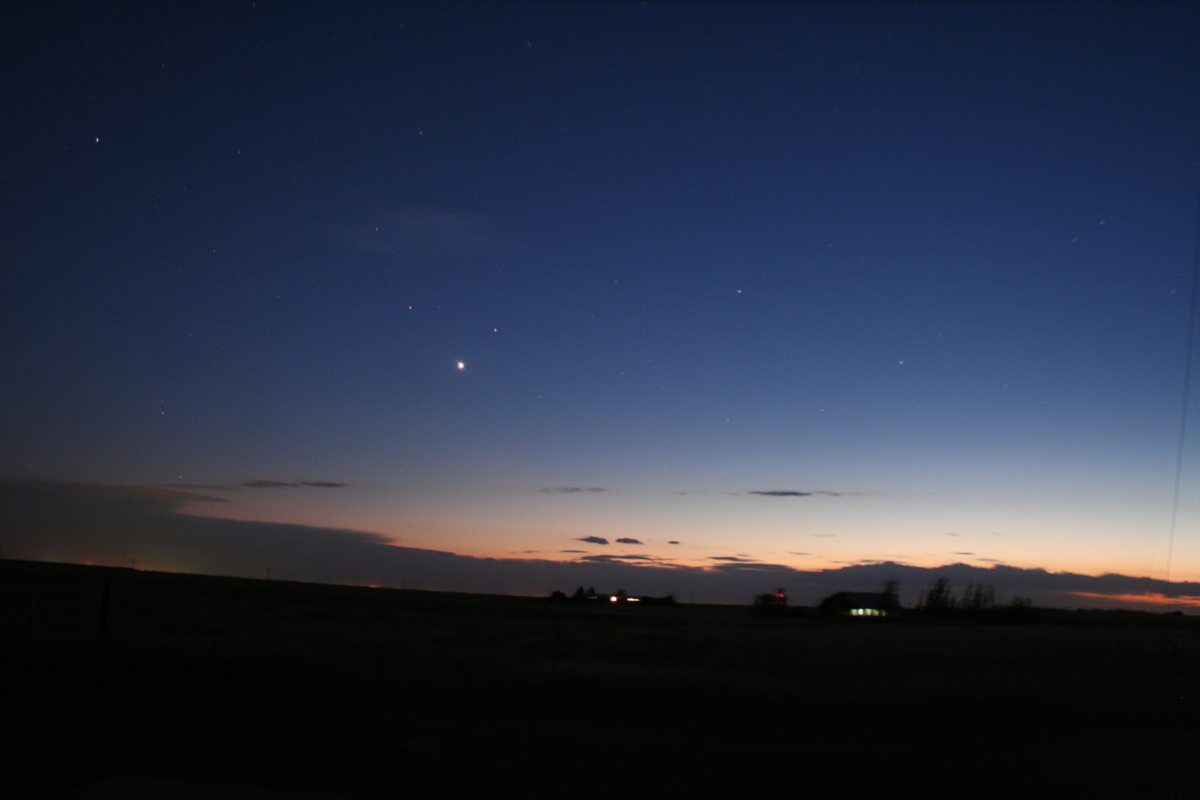
During mid-August of 2010, there was a nice conjunction between Venus, Saturn and Mars. The trio made an interesting sight shortly after sundown. In the above image, Venus is the brightest object, while Saturn is just to the upper right of Venus and Mars is to the upper left.

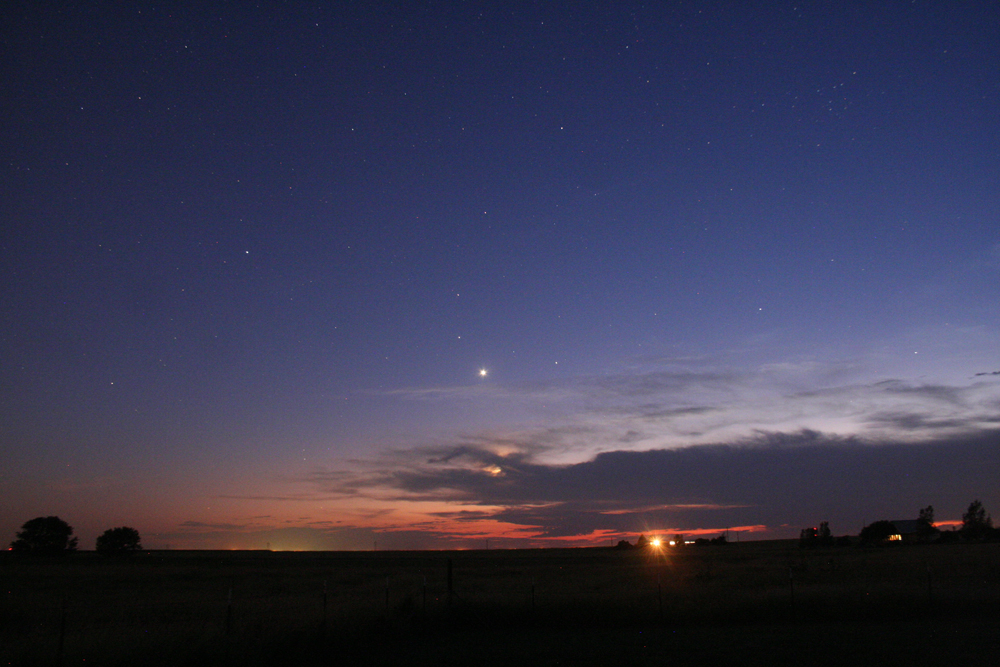
4 days later and Venus has moved noticable further away from Saturn and closer to Mars. On this night the Moon was also visible, although in this image it is hidden behind the cloud.
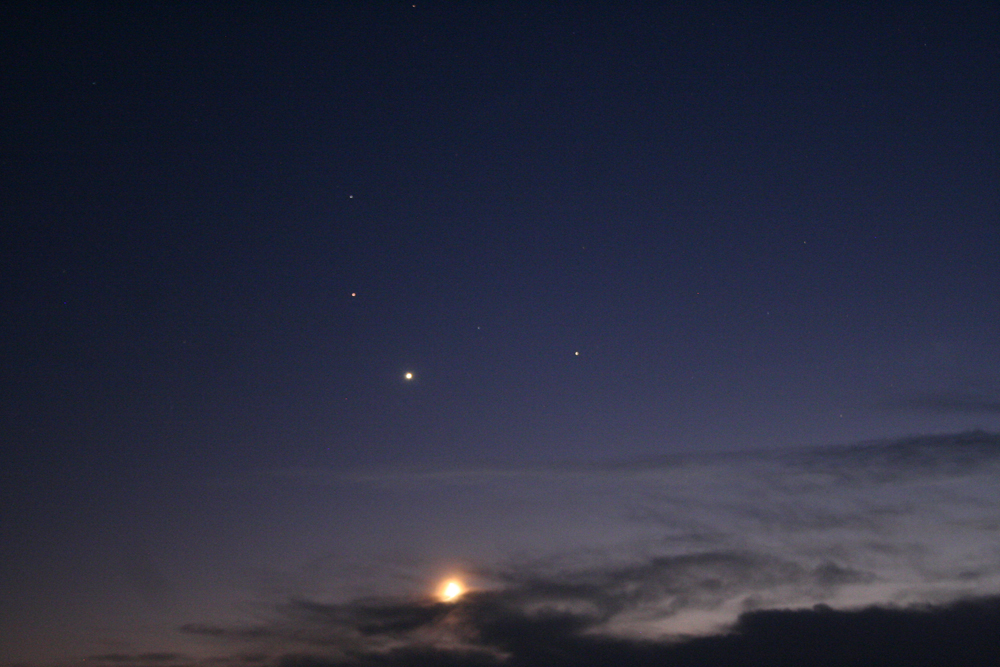
During early September, Venus and Marsdrifted past the bright star Spica.
